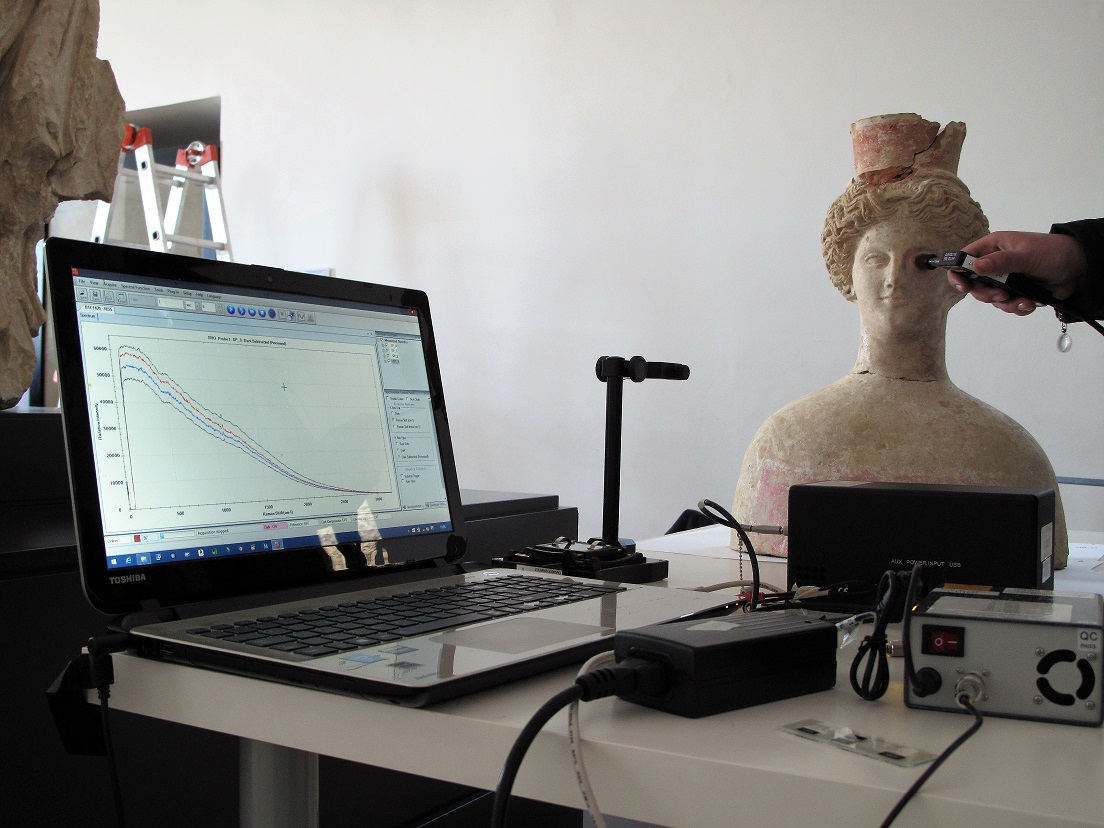
INFN (National Institute of Nuclear Physics), is the body dedicated to the study of the fundamental constituents of matter and carries out theoretical and experimental research in the fields of subnuclear, nuclear and astroparticle physics.
INFN-CHNet (Cultural Heritage Network) is the Institute's network dedicated to cultural heritage.
The mission of the INFN-CHNet is to harmonize and enhance the skills of the various INFN laboratories distributed throughout the country, which for decades have been dealing with the development and application of technologies to the study and diagnostics of cultural heritage.
The leading technologies of the network are based on instrumentation borrowed from physics experiments or on principles of nuclear physics.
Particle accelerators are applied to the elemental study of materials and the dating of works with the radiocarbon method.
Nuclear reactors and X-ray instrumentation are readapted to study the internal structure of objects of historical-artistic value.
The accumulation of radiation in insulating crystals is used for dating with thermoluminescence and optically stimulated luminescence.
The network also has more conventional instrumentation, ranging from XRF, Raman and FT-IR spectrometers, mass spectrometers, and instrumentation for multispectral imaging, colourimetry, thermography, and other investigation techniques.
In general, the information obtained from scientific investigations can provide helpful information to answer various questions and needs of the community of cultural heritage scholars, for example, to plan restoration and conservation interventions in the best possible way; to know the materials used and the construction techniques; to know the place of origin of the raw materials used for the construction of artefacts (useful for example to reconstruct the ancient trade routes); for dating archaeological works or sites; for the authentication of the artworks.
To improve efficiency in answering the questions by operators such as archaeologists, art historians, restorers and conservators, the network is configured as a multidisciplinary infrastructure, which includes organizations with complementary skills to those of the INFN. Among the others, the restoration laboratories (the Opificio delle Pietre Dure in Florence, the Center for Conservation and Restoration La Venaria Reale in Turin), university departments (chemistry department of the University of Sassari and archaeology of the University of Salerno) and associations such as AIAr (Italian Association of Archaeometry). The CHNet network is not just an infrastructure at a national level: international research centers are also part of the network, such as the New York University of Abu Dhabi - (United Arab Emirates), the University of KASHAN (Iran), Myanmar Ministry of Culture ( Burma) and the Universidad Nacional de San Martín - UNSAM - (Argentina).
